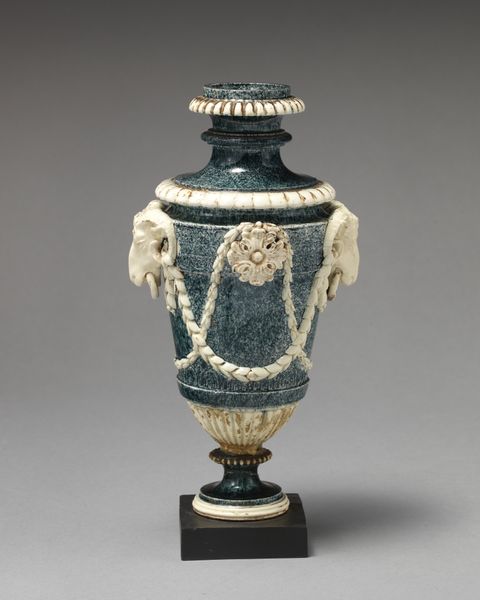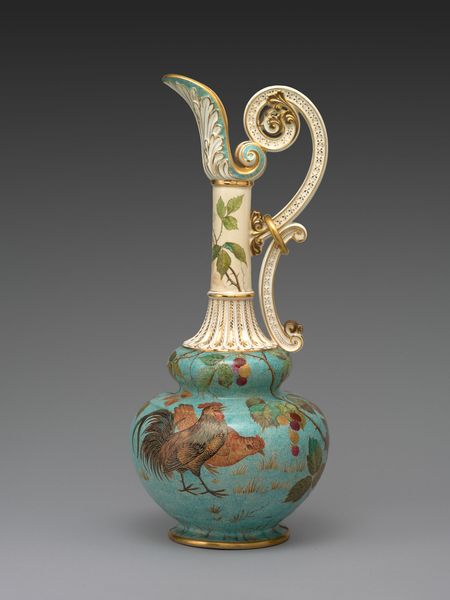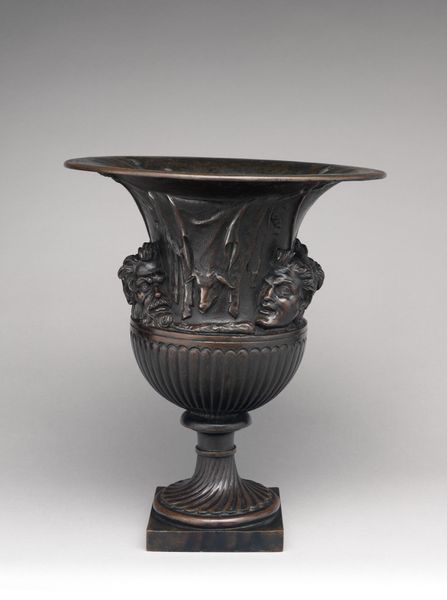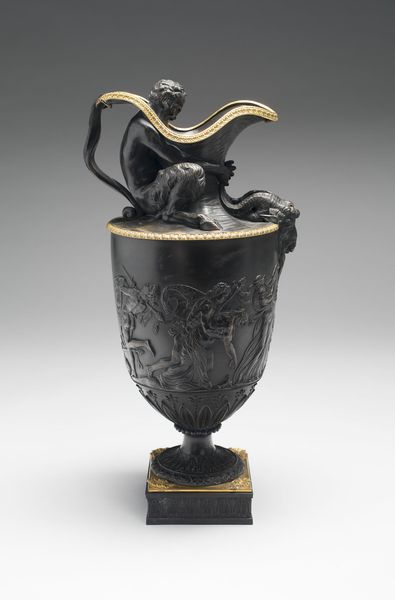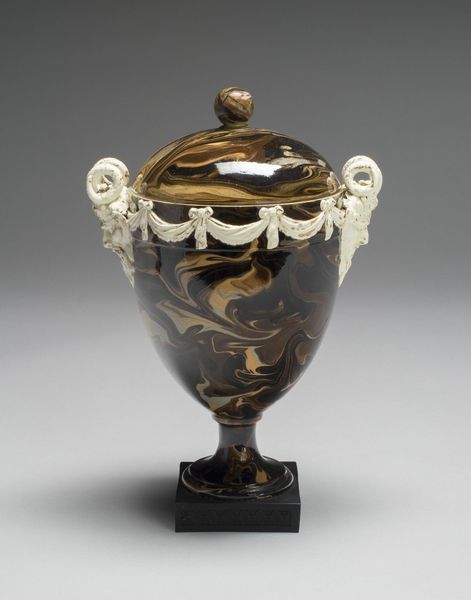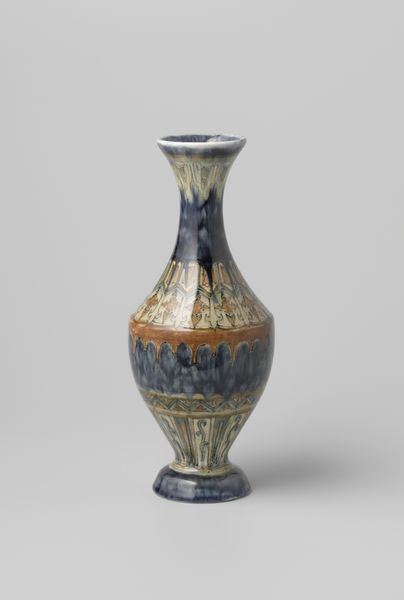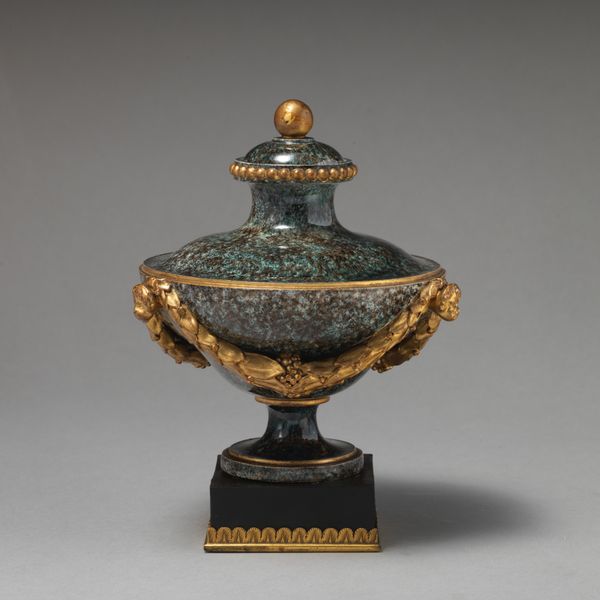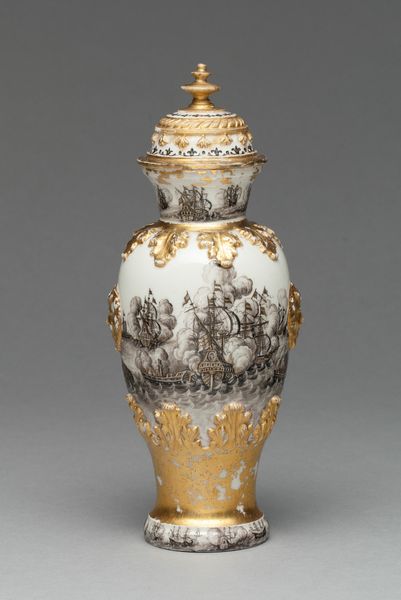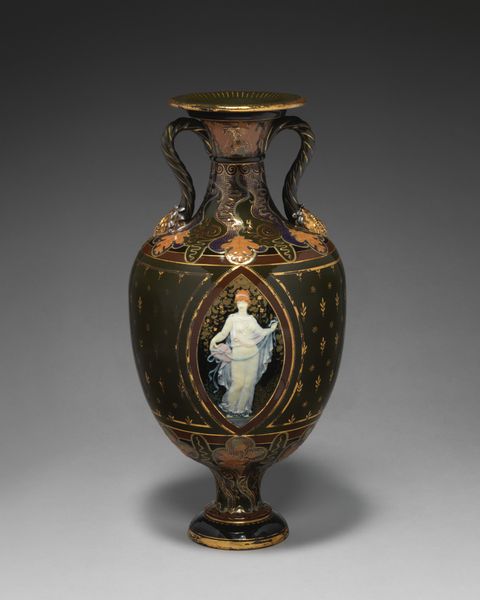
ceramic, sculpture
#
ceramic
#
sculpture
#
decorative-art
Dimensions: Height (each): 9 1/2 in. (24.1 cm)
Copyright: Public Domain
Editor: Here we have "Vase (one of a pair)," created sometime between 1785 and 1799. It’s currently housed at the Met. It’s ceramic, almost sculptural in its presence. I'm immediately struck by how tactile it looks. What's your perspective on this piece? Curator: Well, immediately, I'm drawn to think about production. It's easy to see the labor invested here, isn't it? The speckled glaze, the meticulously rendered ram's head... Editor: Definitely! You can almost feel the maker's hands. Curator: Exactly. And let's consider the materials. Ceramic during this period wasn’t just functional, it was a display of wealth, especially pieces like this meant to imitate stone. Notice the emulation of marble. Do you think it's successful? Editor: I do. The color and texture certainly give that impression, although knowing it's ceramic shifts my perspective. Was it common to imitate materials? Curator: Absolutely. This was a period deeply interested in appearances, in the skillful manipulation of materials to suggest value. Think about the social context: aristocracy trying to signal status in a rapidly changing world. This wasn’t just about having a vase, it was about showing refined taste and possessing specialized skills. This labor extends into what they are imitating, stone and marble. Editor: So, the "value" isn't inherent, but created through labor and manipulation? Curator: Precisely. It challenges traditional notions of what's "high art" by emphasizing the value placed upon resources to mimic precious material for status. This makes the artist, but the artwork even more unique because they need more resources to complete the art object. It's fascinating, isn't it? Editor: It is! It definitely gives me a richer understanding. It is interesting to look at the ceramic vase as an important cultural statement. Curator: Exactly, viewing everyday objects through this perspective broadens our ideas about art.
Comments
No comments
Be the first to comment and join the conversation on the ultimate creative platform.
